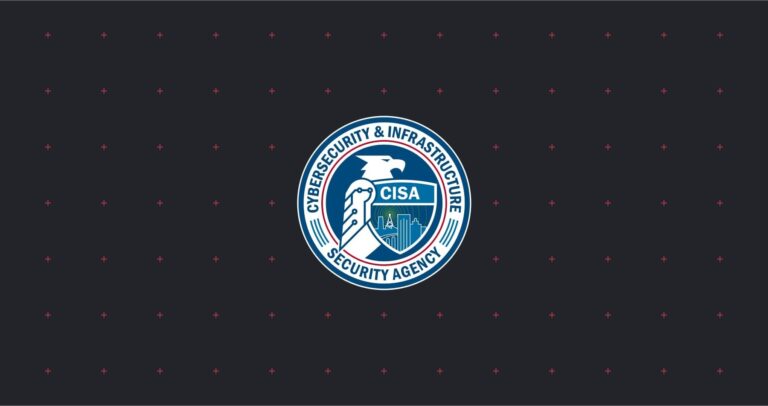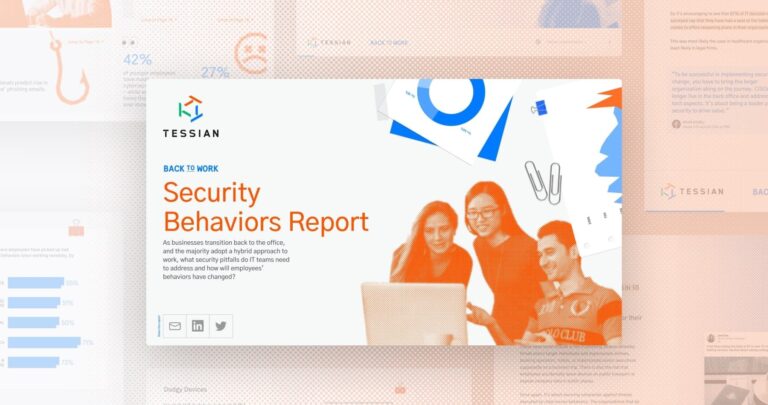According to Tessian research, 75% of IT leaders and 89% of employees believe the future of work will be “remote” or “hybrid” – a combination of working in the office and remotely.
This will have a significant impact on companies’ IT departments, who will be under pressure to deliver a seamless experience and create strategies that empower employees to work remotely and securely. In fact, 85% of IT leaders think they and their team will be under more pressure if their organization were to adopt a permanent remote working structure.
In this blog, we look at their top 7 concerns and explain how to overcome them.
1. Employee wellbeing
Half of IT leaders’ are worried about staff’s wellbeing when they work remotely – making it the top concern among IT professionals.
Remote work can be incredibly stressful for employees. A survey by online employment platform Monster reported that over two-thirds of U.S. workers have experienced burnout symptoms while working from home. Why? Because people are more distracted, they’re taking less time off work, and they’re working longer hours. 61% of employees in another Tessian report said a culture of presenteeism in their organization makes them work longer hours than they need to.
The problem is that when people are stressed, tired and distracted, they make more mistakes that could compromise cybersecurity. In fact, 46% of employees say make more mistakes when they feel burned out.
IT professionals must recognize the correlation between employee wellbeing, their productivity, and security if they want to keep data and systems safe in a remote work world. Lead with empathy and find ways to prevent stressed and distracted employees from making costly cybersecurity mistakes.
2.Unsafe data practices
46% of IT leaders are also worried about employees practicing unsafe cybersecurity behaviors.
Their concerns are valid. A report published by Tessian in May 2020 revealed that 48% of employees feel they can get away with riskier cybersecurity behaviors when working from home, namely because they are working from unfamiliar devices and because they aren’t being watched by IT teams. A further 54% said they’ll find a workaround if security software or policies prevent them from doing their job.
Educating employees on safe cybersecurity practices is a necessary first step. However, only 57% of companies implemented additional training at the start of the remote working period in March 2020. This isn’t trivial; businesses must continually educate staff on safe data practices because cybersecurity is rarely at the front of mind for every employee.
Businesses should also ensure that security solutions or policies do not stand in the way of people getting their jobs done. Workers will find the easiest or most convenient path, and this can often involve skirting around security rules. Security should, therefore, be as flexible as people’s working practices in order to mitigate unsafe behaviors online.
“46% of IT leaders worry about remote workers practicing unsafe cybersecurity behaviors.”
Tessian Research
3. More data breaches
Half of organizations we surveyed said they experienced a data breach or security incident between March and July 2020 – the period in which mandatory remote work arrangements were enforced. Consequently, 40% of IT leaders are worried their company will experience more data breaches if people continue to work remotely.
The causes of these data breaches included phishing attacks (49%), malware (45%) and malicious insider attacks (43%). In addition, 78% of IT leaders said they think their organization is at greater risk of insider threats when staff work from home.
To prevent data breaches caused by insider threats – and other threats caused by human error – IT teams need greater visibility into their riskiest and most at-risk employees. Only by understanding employees’ behaviors, can businesses tailor policies and training to prevent people’s actions from compromising company security and breaching sensitive data.
4. More phishing attacks
Half of the security incidents reported between March-July 2020 were caused by successful phishing attacks – making phishing the top attack vector during this period of remote working.
Of the 78% of remote workers that received phishing emails while working on their personal devices, an overwhelming 68% clicked a link or downloaded an attachment from the malicious messages they received. It’s not surprising, then, that 82% of IT leaders think their organization is at greater risk of phishing attacks when people work remotely.
But why is phishing a greater risk for remote workers?
Because it is not uncommon for an employee to receive information about a new software update for a video conferencing app, or an email from a healthcare organization providing tips on how to stay safe, or a request from a supplier asking them to update payment details.
In fact, 43% of IT professionals said their staff had received phishing emails with hackers impersonating software brands, while 34% said they’d received emails from cybercriminals pretending to be an external supplier.
If the sender’s email domain looks legitimate and if hackers have used the correct logos in the body of the email, there’s very little reason why an employee would suspect they were the target of a scam. And, when working remotely, employees can’t easily verify the email with a colleague. They may, then, click the link to “join the meeting”, download the “new update” or share account credentials.
To learn more about how to spot a spear phishing email, read our blog here.
“Two-fifths of IT leaders think their company will experience more data breaches if people continue to work remotely.”
Tessian Research
5. The IT team’s bandwidth
With organizations facing the threat of more data breaches and security incidents caused by unsafe cybersecurity behaviors, over a third (34%) of IT leaders worry that their teams will be stretched too far in terms of time and resource.
Security solutions powered by machine learning can help alleviate the strain.
Solutions like Tessian use machine learning algorithms to understand human behaviors in order to automatically detect and prevent threats caused by human error – such as accidental data loss, data exfiltration or phishing attacks. When a potential threat is detected, the individual is alerted in real-time and a record of the incident is logged in a simple and accessible dashboard. IT professionals no longer have to spend hours manually looking back through logs to find incidents – the proverbial ‘needle in a haystack’.
When you consider that 55% of IT teams spend more time navigating manual processes than responding to vulnerabilities, finding ways to take away the manual, labor-intensive tasks will be critical in freeing up IT professionals’ time.
6. An increase to IT leaders’ workload
In addition to concerns over their teams’ workloads increasing, IT leaders also fear they’ll face even longer to-do lists in a hybrid or remote working world. Why? To name a few:
- The majority of IT leaders will be implementing new BYOD policies, additional training programs, upgrades to endpoint protection as well as new VPNs in order to address employees’ expectations and safety.
- They have to overcome challenges like data loss prevention (DLP), something 84% of IT leaders say is more difficult in distributed workforces.
- They have to address and mitigate more security risks such as employees bringing infected devices or documents into the office, potentially compromising the company’s entire network.
According to Nominet’s 2020 report – The CISO Stress Report: Life Inside the Perimeter: One Year On – 88% of CISOs are moderately or tremendously stressed. What’s more, 95% work more than their contracted hours amounting to an extra 10 hours per week, on average.
As the pressure increases, businesses must find ways to alleviate stress and empower IT leaders to work effectively and efficiently in order to protect their company and employees.
“88% of CISOs are moderately or tremendously stressed.”
Nominet
7. Non-compliance with data protection regulations
Nearly a third of IT leaders said that remote working could compromise compliance with data protection regulations.
In the last year, misdirected emails have been the number one cause of data breach incidents reported to the Information Commissioner’s Office. A previous Tessian report found that 58% of employees have sent an email to the wrong person during their career and, of these misdirected emails, nearly a fifth (17%) were sent to the wrong external party.
Their reasons? Nearly half said it was because they were tired and 41% said the error was made because they were distracted. Given that studies have shown people are feeling more fatigued and more distracted while working remotely, there is cause for concern that data breaches, caused by human error, will only increase.
Instead of expecting people to do the right thing 100% of the time while working away from the office, invest in security solutions that preempt these errors by detecting and preventing them from happening in the first place. That way, IT leaders can proactively stop sensitive information from leaving their environment, company IP stays secure, compliance standards are met, and customer trust is maintained.
To find out more, read the full report – Securing the Future of Hybrid Work – here.












